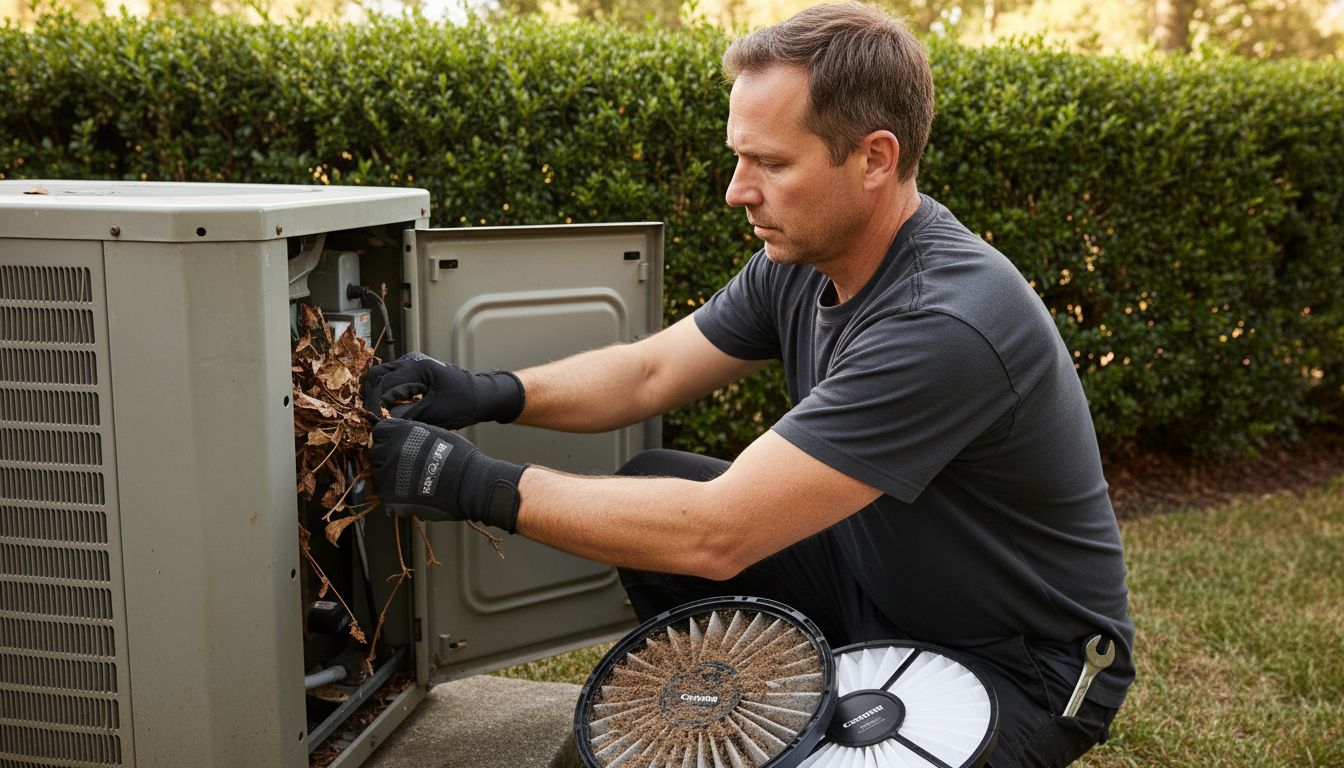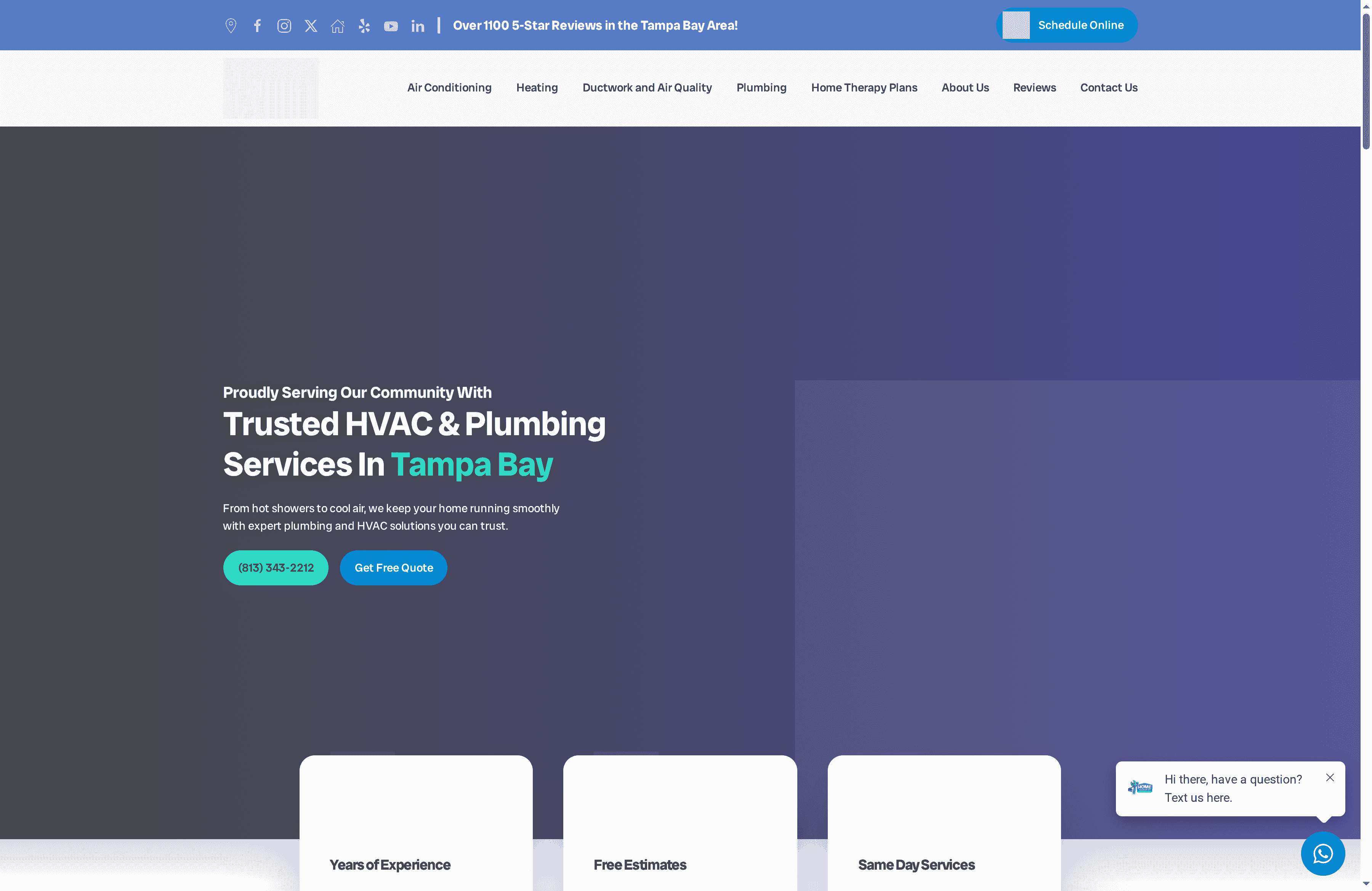
Step-by-Step Guide to HVAC Maintenance for Homeowners
Nearly 90 percent of american households depend on an HVAC system to stay comfortable throughout the year, but many overlook the simple steps that keep it running efficiently. A neglected system can lead to higher bills, frequent breakdowns, and even unsafe indoor air. Understanding the right way to maintain your HVAC allows you to improve comfort and save money. This practical guide walks you through every stage, from essential tool selection to expert-backed system checks.
Table of Contents
- Step 1: Gather Essential Tools And Materials
- Step 2: Inspect HVAC Components And Filters
- Step 3: Clean Coils, Vents, And Drain Lines
- Step 4: Test System Controls And Thermostat
- Step 5: Verify Safe And Efficient Operation
Quick Summary
| Important Insight | Detailed Explanation |
|---|---|
| 1. Gather Essential Tools | Collect insulated screwdrivers, pliers, a multimeter, and other key tools for safe HVAC maintenance. Check tools for damages before use. |
| 2. Regularly Inspect Filters | Monthly inspection and replacement of air filters are crucial for optimal HVAC performance and indoor air quality. |
| 3. Clean System Components | Regular cleaning of coils, vents, and drain lines prevents system failures and maintains efficiency. Remove debris carefully. |
| 4. Test Thermostat Functionality | Verify that the thermostat operates correctly in both heating and cooling modes to ensure efficient system performance. |
| 5. Schedule Professional Inspections | Annual professional evaluations help detect issues early and recommend maintenance for improved system lifespan and efficiency. |
Step 1: Gather Essential Tools and Materials
Before diving into HVAC maintenance, you need to collect the right tools for a smooth and safe process. According to cbt.edu, professional technicians rely on a specific set of equipment that homeowners should also keep handy when performing routine maintenance.
Your essential toolkit should include several key items. Start with insulated screwdrivers for electrical work and safety, adjustable pliers for gripping and turning, a reliable tape measure for precise measurements, and a sturdy pipe wrench for handling connections. Add a multimeter to check electrical components, extension cords for power access, and tin snips for potential sheet metal adjustments. A cordless drill and step ladder will also prove invaluable during more complex maintenance tasks.
Pro tip: Always inspect your tools before beginning any maintenance work. Check that screwdrivers have intact insulation, pliers move smoothly, and measuring tools are accurate. Worn or damaged equipment can compromise both your safety and the effectiveness of your HVAC maintenance. Once your tools are assembled and verified, you are ready to move on to the next step of your home system checkup.
Step 2: Inspect HVAC Components and Filters
Inspecting your HVAC system is crucial for maintaining optimal performance and preventing potential breakdowns. According to FrameworkHomeownership, a comprehensive assessment involves several key steps that will help you identify potential issues before they become costly repairs.
Start by examining the outdoor unit for any visible debris or obstructions. Remove leaves, grass clippings, and other materials that might impede airflow. Next, focus on your air filters, which play a critical role in system efficiency. Energy Star recommends checking filters monthly and replacing them at least every three months to maintain optimal performance and indoor air quality.
Pro tip: While inspecting, look for any signs of wear on electrical lines, ductwork joints, or refrigerant lines. Small cracks or damage can significantly impact your system’s efficiency and potentially lead to more extensive repairs. Catching these issues early can save you time, money, and the inconvenience of a complete system breakdown.
 After your thorough inspection, you’ll be ready to move on to the next maintenance step with confidence.
After your thorough inspection, you’ll be ready to move on to the next maintenance step with confidence.
Step 3: Clean Coils, Vents, and Drain Lines
Cleaning your HVAC system components is essential for maintaining peak performance and preventing potential system failures. According to Minnesota State Government, a comprehensive cleaning routine involves carefully removing dirt, leaves, and debris from various system components to ensure optimal efficiency.
Begin with the outdoor unit cabinet, gently removing any accumulated debris. Next, focus on the evaporator coils, which can collect dust and grime that impedes heat transfer. Use a soft brush or specialized coil cleaner to remove buildup carefully. For drain lines, check for any blockages and clear them using a wet vacuum or specialized cleaning solution. Pay special attention to the condensate drain pan, ensuring it is free from standing water or potential mold growth.
Pro tip: EEMO Guidelines recommend keeping surrounding shrubbery trimmed to prevent airflow obstruction and maintain proper ventilation around your HVAC system. This simple step can significantly improve your system’s overall performance and prevent potential damage from overgrown vegetation. With your coils, vents, and drain lines now clean, you’re ready to move forward with the next stage of your HVAC maintenance process.
Step 4: Test System Controls and Thermostat
Testing your HVAC system controls and thermostat is a critical maintenance step that helps ensure your system operates efficiently and accurately. According to the U.S. Department of Energy, homeowners should carefully review their system’s owner manual and understand how to properly test and adjust system controls.
Start by checking your thermostat’s functionality. Set it to cooling mode and lower the temperature to trigger the system. Listen for the system to start and verify that cool air begins flowing within a few minutes. Next, switch to heating mode and raise the temperature to confirm the heating cycle initiates correctly. Pay attention to any unusual sounds or delays in system startup that might indicate underlying issues.
Pro tip: Energy Star recommends using ceiling fans in conjunction with your air conditioning to enable more comfortable temperature settings. By using fans, you can potentially raise your thermostat setting by 4°F without sacrificing comfort, which can lead to significant energy savings. After completing your system control tests, you’ll be ready to move on to the next phase of your HVAC maintenance routine.
Step 5: Verify Safe and Efficient Operation
The final stage of HVAC maintenance involves thoroughly assessing your system’s overall performance and safety. According to Air Conditioning Contractors of America, finding a qualified professional for comprehensive system evaluation is crucial to ensuring optimal functionality and detecting potential issues early.
Begin by running your system through a complete cycle, listening carefully for any unusual sounds, checking airflow consistency, and monitoring temperature output. Pay attention to how quickly the system reaches the desired temperature and whether it maintains that temperature evenly throughout your living space. Look for signs of inefficiency such as short cycling, inconsistent cooling or heating, or unexpected noise that might indicate mechanical strain.
Pro tip: The Environmental Blog recommends scheduling annual professional inspections to improve system efficiency, extend equipment lifespan, and maintain superior indoor air quality. If you notice any persistent performance issues during your verification process, it might be time to consult a professional technician who can provide a more detailed diagnostic assessment. With this final step complete, you have successfully conducted a comprehensive HVAC maintenance routine that will help keep your system running smoothly and efficiently.
Keep Your HVAC System Running Smoothly with Expert Help
Maintaining your HVAC system involves several critical steps such as inspecting filters, cleaning coils, and testing controls to prevent costly breakdowns and improve efficiency. If you find yourself overwhelmed by the detailed maintenance tasks or notice issues like unusual noises or inconsistent temperatures, it may be time to rely on trusted professionals. Avoid the stress and physical challenge of complicated HVAC upkeep by choosing expert assistance.

Protect your home comfort now with Home Therapist Cooling, Heating, and Plumbing. Our certified technicians in the Tampa Bay area specialize in thorough HVAC inspections, routine maintenance, and repairs tailored to your home’s unique system needs. Don’t wait for minor problems to become expensive repairs Schedule your service today and experience reliable comfort all year long.
INFOGRAPHIC:infographic_content] Visit [Home Therapist Cooling, Heating, and Plumbing and take the first step toward a safer, more efficient HVAC system.
Frequently Asked Questions
What tools do I need for HVAC maintenance?
To perform HVAC maintenance, gather insulated screwdrivers, adjustable pliers, a tape measure, a pipe wrench, a multimeter, extension cords, tin snips, a cordless drill, and a step ladder. Ensure all tools are in good condition before starting your maintenance.
How often should I check and replace my air filters?
You should check your air filters monthly and replace them at least every three months to maintain optimal HVAC performance and indoor air quality. Set a reminder to review your filters regularly to avoid buildup that can affect your system’s efficiency.
How do I clean my HVAC system’s coils and drain lines?
Begin by removing visible debris from the outdoor unit and then gently clean the evaporator coils with a soft brush or coil cleaner. Check drain lines for blockages and use a wet vacuum to clear clogs; performing this maintenance periodically can significantly enhance system performance.
What should I do to test my HVAC system controls and thermostat?
Test your thermostat by setting it to cooling mode and lowering the temperature, listening for the system to activate, and verifying cool air is flowing. Switch to heating mode and raise the temperature to ensure proper heating; this process should be done at the beginning of each heating and cooling season.
How can I verify my HVAC system is operating efficiently?
Run your HVAC system through a full cycle, listening for unusual sounds and checking for consistent airflow and temperature output. If you notice issues like short cycling or inconsistent heating/cooling, schedule maintenance promptly to avoid costly repairs.
Why is it important to perform routine HVAC maintenance?
Routine HVAC maintenance helps to improve system efficiency, extend the lifespan of your equipment, and maintain good indoor air quality. Keep a schedule for annual inspections to ensure that your HVAC system continues to operate smoothly and effectively.
Recommended
- Proactive Tips for Seasonal Air Conditioning Maintenance – Home Therapist Cooling, Heating, and Plumbing
- Smart Seasonal Air Conditioning Maintenance Tips for Better Airflow – Home Therapist Cooling, Heating, and Plumbing
- How to Choose HVAC System for Tampa Bay Homes Easily – Home Therapist Cooling, Heating, and Plumbing
- Understanding HVAC Installation vs. Repair: My Personal Take – Home Therapist Cooling, Heating, and Plumbing




